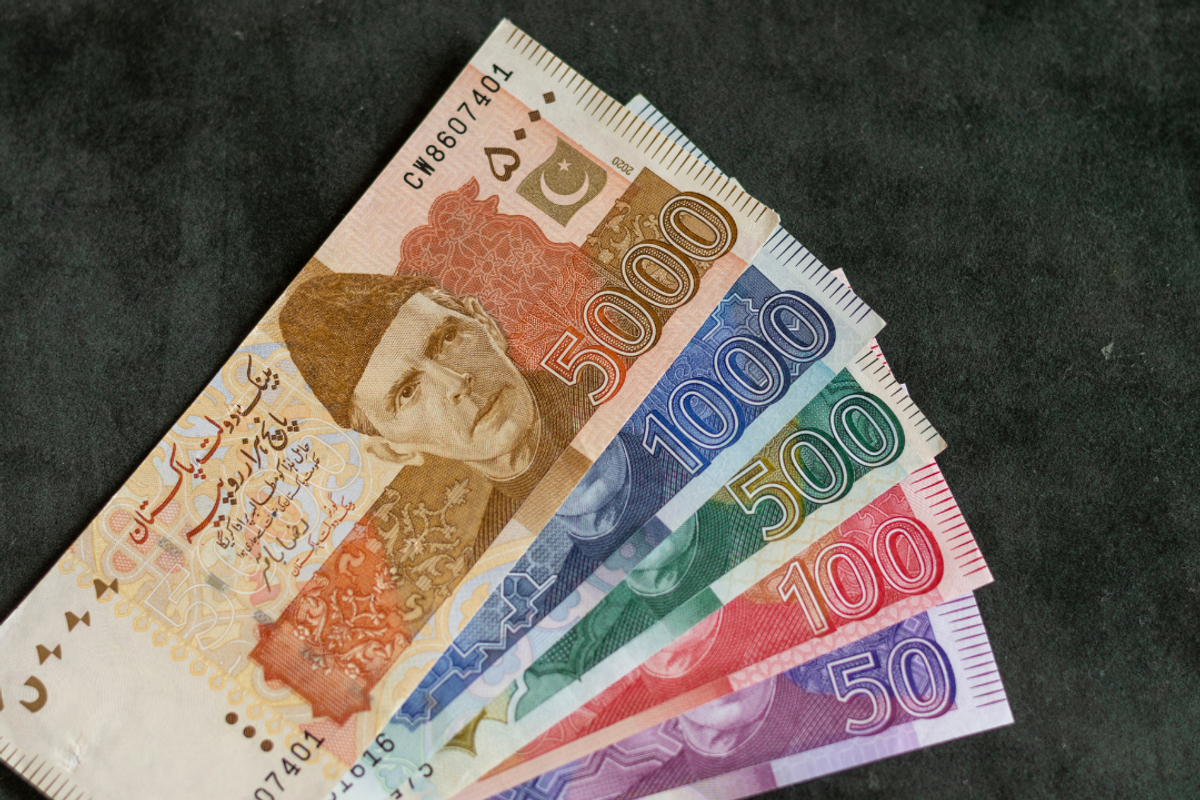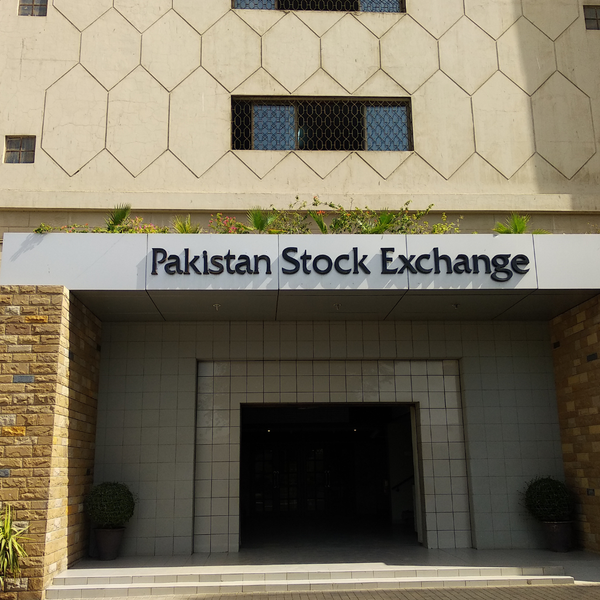Cash reigns supreme in Pakistan despite the global digital boom – but for how long?
While the world races toward a cashless future, Pakistan is still printing billions worth of currency every year
Nida Gulzar
Research Analyst
A distinguished economist with an M. Phil. in Applied Economics, Nida Gulzar has a strong research record. Nida has worked with the Pakistan Business Council (PBC), Pakistan Banks' Association (PBA), and KTrade, providing useful insights across economic sectors. Nida continues to impact economic debate and policy at the Economist Intelligence Unit (EIU) and Nukta. As a Women in Economics (WiE) Initiative mentor, she promotes inclusivity. Nida's eight 'Market Access Series papers help discover favourable market scenarios and export destinations.

Pakistan is still printing billions worth of currency every year
Shutterstock
In bustling markets and corner shops across Pakistan, cash is still the currency of choice. But behind every paper note lies a hidden cost — one that’s holding the economy back.
While the world races toward a cashless future powered by AI, mobile wallets, and digital banking, Pakistan is still printing billions worth of currency every year — literally. From lost tax revenue to financial exclusion and security risks, the real price of cash is becoming too high to ignore.
Economic burden of cash dependency
Pakistan’s cash-based economy is costly, draining resources for printing, transport, and security while fueling tax evasion and limiting capital for productive, export-driven sectors. With PKR 9.2 trillion currency in circulation as of June, the vast informal sector limits government revenue for healthcare, education, and other ESG-related activities limiting economic growth.
“In FY24 (fiscal year 2023-24), the State Bank of Pakistan (SBP) spent PKR 31.3 billion on currency printing, with an estimated PKR 16 billion for high-denomination notes,” said Ammar H. Khan, assistant professor of practice at IBA, Karachi.
Undocumented cash transactions hinder savings and investment, while the informal economy’s unrecorded dealings exacerbate capital deficits.
According to the State Bank data, the currency in circulation makes up just 25.5% of total broad money, highlighting Pakistan's slow progress in digitalization.
Digital payment trends and global comparisons
The digital payments landscape is evolving rapidly across Asia and Scandinavian countries, with each country exhibiting unique trends and growth drivers.
China
China leads globally in digital payments, with platforms like Alipay and WeChat Pay deeply integrated into daily life. The country's vast e-commerce market and supportive regulatory environment have propelled this growth. Over the next five years, innovations in blockchain and central bank digital currencies (CBDCs) are expected to further transform the ecosystem.
India
India's repeated demonetization efforts aim to curb "black money" by letting the central bank monitor transactions and prevent crime. The country has witnessed a digital payments boom, particularly with the Unified Payments Interface (UPI), which processed over 20.5 billion transactions worth $432 billion in 2022's second quarter.
UPI offers a blueprint for leveraging technology to reduce cash dependency and spur economic growth. The approval for WhatsApp to extend its payment services to all users is set to further expand the market.
Key drivers include a tech-savvy population and government initiatives promoting financial inclusion. However, the rise in digital transactions has also led to increased digital financial crimes, necessitating enhanced cybersecurity measures.
Japan
Japan's digital payments adoption has been moderate, influenced by a cultural preference for cash. However, initiatives like the government's ‘Cashless Japan’ campaign aim to increase cashless payments to 40% by 2025. The proliferation of QR code payments and mobile wallets is gradually changing consumer behavior.
Norway and Sweden
Scandinavian countries are at the forefront of the cashless revolution. In Sweden, cash transactions make up less than 10% of payments, driven by extensive infrastructure and public trust in digital systems. In contrast, Pakistan's digital payments currently account for only about 27% of total retail transactions, indicating a considerable distance to cover.
Mobile payment platforms like Swish have seen widespread adoption, boasting over eight million users as of July 2022 (total Swedish population: 10.2 million).
Norway follows closely, with mobile payment apps like Vipps dominating the market. However, initially a pioneer in cashless transactions, the country is reevaluating its stance due to security considerations, emphasizing the need to maintain cash availability to enhance national preparedness.
South Korea
South Korea boasts a highly advanced digital payments infrastructure, with credit cards and mobile payments being the norm. The government's push for a ‘coinless society’ and the popularity of platforms like KakaoPay and Samsung Pay have accelerated this trend.
Southeast Asia
Southeast Asia is experiencing a digital finance revolution. Factors such as widespread smartphone adoption, a burgeoning e-commerce sector, and supportive government policies are driving this growth.
According to Statista, the digital payments market in Asia is set for rapid expansion, with total transaction value expected to reach $4.08 trillion in 2025 and grow at a CAGR of 19.67% from 2025 to 2029, doubling to $8.36 trillion by 2029.
Mobile POS payments will dominate the sector, accounting for $2.49 trillion in transactions by 2025, driven by increased reliance on smartphones and contactless payment solutions in global commerce.
Why Pakistan’s digital shift remains slow
Leading cashless economies have curbed the informal sector, boosting tax compliance and revenue. In contrast, Pakistan's large informal economy hinders a full transition. A concerted effort involving technological infrastructure, public education, and policy reform will be essential.
Pakistan’s digital banking is growing, led by Easypaisa Digital Bank, which enhances financial inclusion and cross-border transactions via Alipay+. Processing five million daily transactions, it helps reduce cash reliance. With AI and blockchain reshaping finance, Pakistan can drive inclusion and economic growth.
As per the consumer survey conducted by Statista, the share of respondents using cash transactions at POS (Point-of-Sale) stood at 84% in 2019, which declined to 78% in 2023, signaling progress.
Pakistan has made strides in digital banking with initiatives like Raast, but the adoption rate remains slow compared to global leaders like Scandinavian countries that are leading the cashless revolution, with less than 10% of transactions conducted in cash. Meanwhile, China’s integration of mobile wallets like Alipay and WeChat Pay has transformed its payment ecosystem, even in rural economies.
Barriers such as limited infrastructure, low financial literacy, and cultural reliance on cash hinder progress. However, the government is pushing for change through initiatives like Uraan Pakistan, targeting 6% GDP growth by 2028 with a focus on digital payments. The State Bank’s National Payment Systems Strategy aims to boost GDP by 7%, create four million jobs, and attract $263 billion in electronic deposits.
With Raast’s real-time payment system and a growing fintech sector, Pakistan has tools to accelerate financial inclusion, reduce costs, and drive sustainable economic growth.
Environmental and security impact of cash
Cash is costly and harmful to the environment, consuming resources and fueling pollution. Digital payments reduce this impact while offering safer, encrypted transactions. Though they prevent theft and counterfeiting, strong cybersecurity is crucial to tackling fraud. With the right safeguards, Pakistan can embrace a greener, more secure financial future.
Digital payments empowering lives
Digital payments are transforming lives in Pakistan, helping small businesses grow, farmers access timely subsidies, and women gain financial independence. Shopkeepers using mobile payments see higher sales and customer trust, while farmers bypass middlemen through direct digital transfers.
However, challenges remain; a report by the Cherie Blair Foundation for Women highlights that the high cost of mobile data hampers female entrepreneurs in developing countries, including Pakistan, limiting their ability to fully leverage digital platforms for business growth.
Policy recommendations
Pakistan must accelerate digital adoption by expanding internet access, offering tax incentives for cashless businesses, and running financial literacy campaigns. Mastercard’s partnership with JazzCash is already driving adoption through QR codes and Tap on Phone for small businesses, while Visa and 1Link aim to increase digital payment acceptance tenfold in three years. With the right policies and fintech collaborations, Pakistan can build a more efficient and inclusive digital economy.
Pakistan's shift to a cashless economy promises greater financial inclusion, better tax compliance, and reduced corruption, but challenges like a vast informal sector and cybersecurity risks remain.
To succeed, policies must incentivize digital payments and expand merchant acceptance. While a full transition will take time, the long-term benefits – economic resilience, transparency, and efficiency – make it a necessary step toward a stronger financial future.










Comments
See what people are discussing